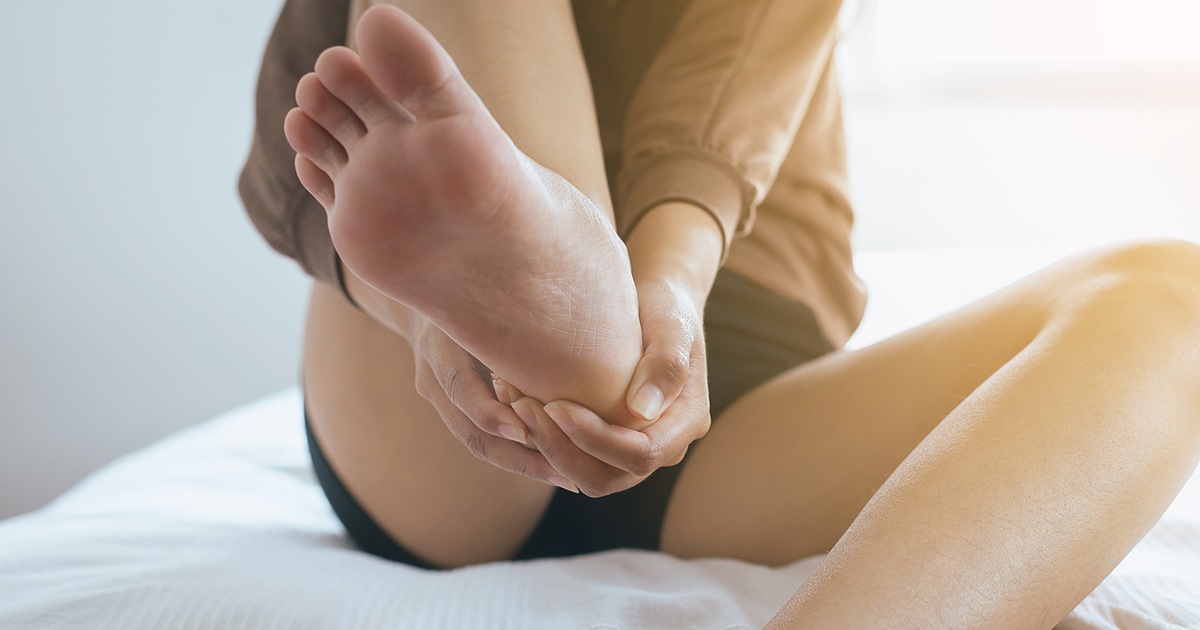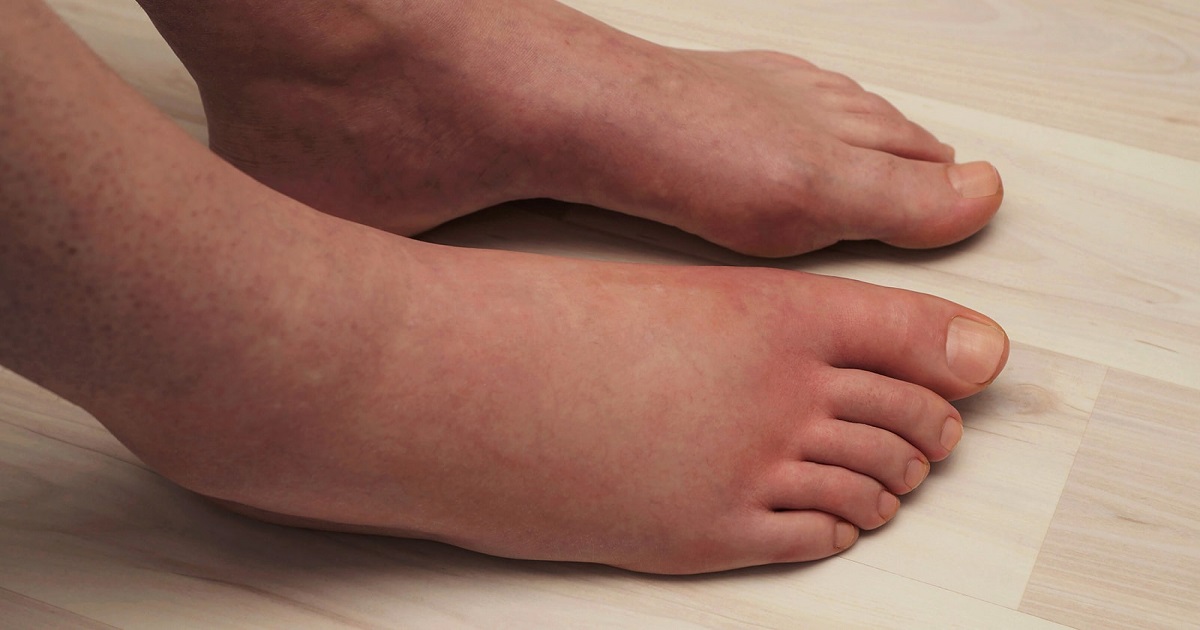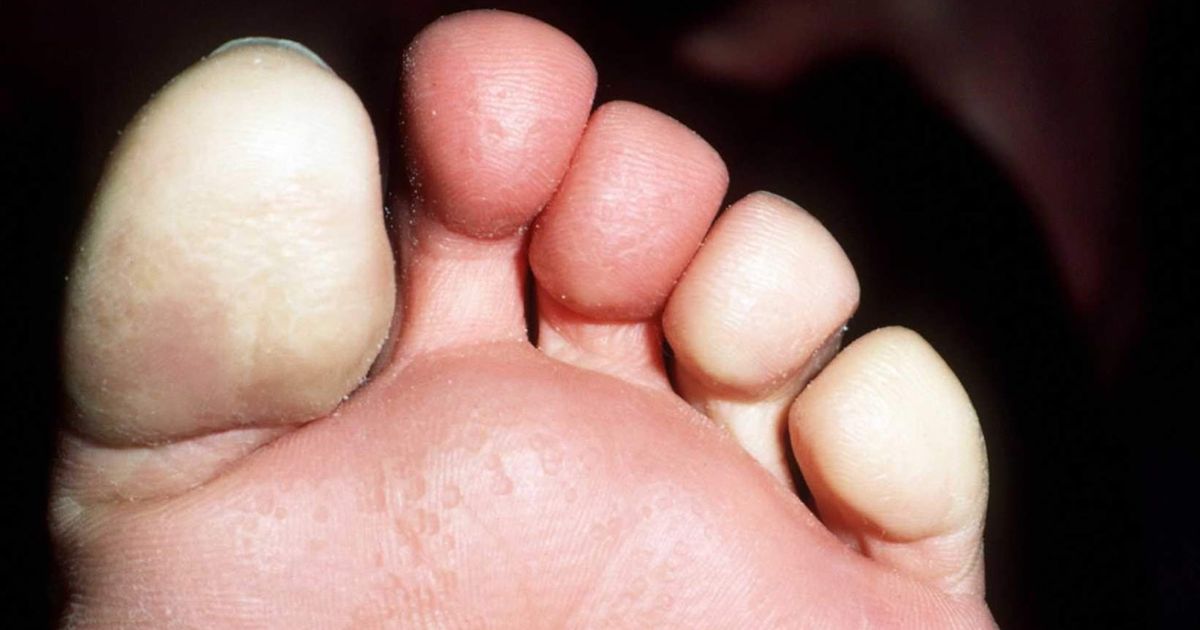Serious Problems That Sore Feet Can Indicate
Your feet are complex in their anatomical structure and sensitive to health problems that occur in the body and can reveal numerous hidden health problems. Your feet in a sense are the window to what’s going on with your body. Often neglected, you may tend to ignore the signs of pain you experience in your feet. Major changes with your foot comfort can be an indication that there is a much larger health issue at hand. Here are some of the problems that are associated with sore feet.
Foot Cramping

Foot cramping occurs when a muscle in the foot suddenly squeezes and cannot relax properly, and can be quite painful. Although generally harmless, foot cramps can also be a major indicator of various health issues as well. It can indicate a smaller issue such as you’re dehydrated and lacking nutrition in the body, such as abnormal levels of electrolytes or minerals. Bigger issues can include nerve and circulation problems including a lack of blood flow to the feet or more significant neurological conditions such as Parkinson disease, multiple sclerosis, dystonia, and Huntington disease. Try consuming more potassium, magnesium, calcium, and water to help the body get more essential nutrients that can help relieve cramping. To relieve the cramps, take a foot bath and stretch the toes toward your nose. If the cramping persists, see a doctor to ensure you’re not suffering from nerve damage, poor circulation, or another serious health condition.
Keep reading to find out why a sore on the foot may not heal properly.
A Sore That Will Not Heal

If you have a sore known as an abscess on your foot that will not heal, it can be a visible sign that an individual has diabetes. If you have already been diagnosed with diabetes, the uncontrolled glucose levels in your blood can cause nerve damage that affect your feet. Unfortunately, diabetes can impair sensation in the feet, circulation, and proper wound healing, as a result, the nerve damage that ensues may not allow you to feel the sore, causing it to fester and not be tended to promptly. If the sore gets infected, there are cases where amputation has been necessary. Diabetics should always try their best to wash and dry their feet and check them daily for any wounds. Slow-healing sores can also be a sign of poor foot circulation caused by blood disorders, such as peripheral artery disease.
Next, learn what cold feet can mean now.
Constant Cold Feet

If your toes are always feeling cold, even after putting on a pair of warm and cozy socks, one predominate reason can be due to poor blood circulation, which can be connected to cardiovascular disease, high blood pressure, smoking, or anemia. Nerve damage associated with diabetes that is uncontrolled can also be a culprit for cold feet as well.
The most common cause of feet that are always cold is hypothyroidism. This is something to pay attention to especially if a patient is over forty years old. It is also possible you have an under active thyroid. Furthermore, if you do not manage hypothyroidism properly, you may experience hair loss, exhaustion, weight gain without reason, and depression. Cold feet is the first indication of hypothyroidism that can be diagnosed with a blood test. Once diagnosed, you can take daily medication to prevent major health problems.
Continue reading to discover what conditions foot pain and stiffness can indicate.
Foot Pain And Stiffness

For older people, episodes of foot pain and stiffness can be osteoarthritis. The condition can cause wear and tear in the tissues and joints of the heel and big toe. A less common diagnosis is rheumatoid arthritis but again, foot pain can indicate you have it. The pain in your feet occurs from inflamed joint tissues due to your immune system attacking joints. For osteoarthritis, wear footwear that reduces any strain on the joints. Painkillers and anti-inflammatory medications also help ease any discomfort. For rheumatoid arthritis, there are specific medications that relieve symptoms and help to slow down the progression of this disease.
Besides high heels and improper fitting shoes, foot pain can also be caused by a stress fracture, which is a small crack in a bone, which can be caused by intense exercise from high-impact sports.
Reveal the next type of pain you can feel in your feet now.
Heel Pain

If you experience a sharp pain in the bottom of the heel when you stand up from a sitting position, you may have plantar fasciitis, inflammation where the long ligament in the foot attaches to the heel bone, which supports the arch of your foot. The pain may be at its peak when you first wake up and put pressure on the affected foot. Plantar fasciitis can be caused by frequently wearing flip-flops, wearing shoes that are too tight or shoes that no longer have proper support. The injury will persist and take longer to heal, the longer you abuse your feet. To prevent it, make sure to wear supportive shoes and do some stretching before and after workouts.
Tendonitis, arthritis, excessive exercise, and poorly fitted shoes with little support in the heel can also cause heel pain to develop, and less common causes include a bone spur on the bottom of the heel, a fracture, a tumor, or a bone infection.
Uncover the next foot condition that can indicate a bigger health problem now.
An Enlarged, Painful Big Toe

A painful big toe is a sign that you may have gout, which is a form of arthritis specifically affecting the joint in the big toe that can also cause redness and swelling. It occurs from eating too much steak, wine or any food that is high in purine. Other foods to not overindulge in include fish and some kinds of alcohol. An attack of gout occurs with uric acid level rising, which is usually excreted through urine. Gout is extremely painful and will likely require anti-inflammatory medications to treat it. For long-term prevention, a doctor will usually suggest a low-purine diet.
Other causes of big toe pain include osteoarthritis and turf toe. If the joint in the big toe is rigid, it could also be hallux rigidus, a common complication of arthritis where a bone spur develops, and turf toes is an injury many athletes experience, especially those who play on hard surfaces.
Next, discover why you may be experiencing a burning sensation in your feet.
Burning Pain

Extreme burning pain on the ball of the foot and base of toes could possibly be Morton’s neuroma. As fibrous tissue develops around nerves, they become compressed and therefore irritated. This is when the burning pain persists. Usually, the third and fourth toes are affected first and foremost. Steroid injections may be necessary or possibly surgery.
A burning sensation in the feet is also another common side effect of diabetes due to peripheral nerve damage. Experiencing burning in the feet can also be caused by a vitamin B deficiency, athlete's foot, hypothyroidism, peripheral arterial disease (poor circulation), and chronic kidney disease.
Keep reading to learn what conditions swollen feet are associated with.
Swollen Feet

Swollen feet is generally a common issue that almost everyone will experience at some point in their lifetime. Swelling of the feet and ankles occurs due to fluid retention in the soft tissues where it moves out of the blood vessels and collects in the surrounding tissues. It can also happen if there is an increase in salt and water levels within the body. Usually, a typical symptom of pregnancy, if an individual has been standing or sitting for a long period, such as after a long flight, or if an individual is overweight, swollen feet can be explained as a simple symptom of a condition or can be an indication of a more serious medical problem. Causes of swollen feet can range from edema, poor circulation, a blood clot, or an issue with the lymphatic system, such as lymphedema. It can also be a clear sign of a kidney condition or an underactive thyroid disorder as well. To help reduce the appearance of swollen feet, you can wear compression socks, which can greatly improve blood circulation, reduce salt in your diet, and elevate your feet when swelling occurs.
Continue reading to find out what causes discolored toes.
Discolored Toes

Discolored toes can happen for many different reasons: from bruises and injury on the toes to bruising of the bone, to serious conditions such as Raynaud’s disease. Raynaud’s disease is one of the common reasons a patient may experience discolored toes, especially if their toes appear abnormally white, then bluish, and then redden again before turning back to their natural tone. This sudden fluctuation in color is caused by the sudden narrowing of the arteries called vasospasms, which are often triggered by stress or temperature changes. Raynaud’s disease is also linked to other disorders such as rheumatoid arthritis, Sjogren’s disease, and thyroid conditions.
Next, reveal how clubbed toes are formed and what health concerns are associated with them.
Clubbed Toes

Clubbed toes, and often the fingers too, is when the shape of the extremity changes, as the nails are significantly rounded on top and curve downward. Numerous diseases can cause clubbing of the toes, including lung disease and heart disease, due to the reduced amount of oxygen in the blood. Lung conditions include chronic lung infections that occur in patients with bronchiectasis, cystic fibrosis, or lung abscess. Liver and digestive conditions, along with specific infections, can also cause clubbed toes. In some cases, clubbing can be genetically inherited and run in families, meaning there are no underlying causes or diseases associated with it, but rather just a gene mutation.
Uncover what can cause itchy feet to develop now.
Itchy Feet

Itchy, scaly skin on the feet can be caused by a variety of conditions, from athlete’s foot, a common fungal infection, to eczema, a chronic inflammatory skin disorder. Allergic contact dermatitis, which is an allergic reaction to chemicals or skin care products, can occur due to skin sensitivities to laundry detergent or even new shoes. An allergic reaction can also cause redness and dry patches on the feet. Psoriasis can be another health concern related to itchy feet, as it not only causes itchiness but can cause the skin to become thick and pimple-like due to an overaction from the immune system. Other underlying health conditions that can cause itchy feet include atopic dermatitis, juvenile plantar dermatosis, scars, bug bites, or simply dry skin. Many of these disorders, as well as just itchy feet in general, can be treated with a medicated cream that can help alleviate the itch along with other symptoms.
Discover what causes an individual to drag their feet now.
Dragging Your Feet

Do you know somebody who drags their feet, or could it even be you? Sometimes the primary indicator that there is something medically wrong with an individual is noticeable changes in the way they walk, such as a wider gait or a slight dragging of the feet. What can cause you to drag your feet? Simply put, the cause may be due to the slow loss of normal sensation in your feet, caused by peripheral nerve damage, which can be the result of diabetes and other serious conditions. Nerve damage can further be caused by alcoholism, an infection, or a vitamin deficiency, but in many cases, the exact root cause of the nerve damage is unknown. Other known causes of foot-dragging include brain, spinal cord, or muscle problems, such as an injury to one of these organs.
Continue reading to find out what causes claw toe.
Claw Toe

Claw toe can be the result of improperly fitted shoes, such as shoes that are too tight and pinch the toes, or by diseases that cause nerve damage such as diabetes, alcoholism, or other neurological conditions that weaken the muscles in the foot. Claw toe causes the toes to become bent upward as they extend from the ball of the foot, then downward from the middle joint, appearing to look like a claw. Fortunately for those who have claw toe, this foot deformity may respond to foot exercises and stretches specifically for the toes, or the patient may need to wear special shoes. In severe cases, surgery may be necessary to correct the issue.
Finally, learn what the health of your toenails mean and how a more serious health problem may be developing.
Toenail Problems

Similar to your feet, your toenails can reveal a tremendous amount of information about your overall health. From yellow to white toenails, they all can indicate various underlying health problems a patient may be unaware that is brewing inside of them. A fungal infection often causes thick, yellow toenails, and can indicate further health complications such as lymphedema, psoriasis, rheumatoid arthritis, and lung disorders. Injury to the toenail or constant exposure to petroleum-based solvents can cause spoon-shaped, concave nails, which can also be a clear sign of an iron deficiency due to the unusual shape.
White areas in the nails can be the result of an injury, a nail infection, psoriasis, or an illness within the body, and can cause a part of or all of the nail to separate from the nail bed. If the nail is still intact but mostly white, it can sometimes be a visible sign of critical health problems such as liver disease, congestive heart failure, or kidney disease. Psoriasis can also cause pitting or punctured-looking depressions in the surface of the nail due to a disruption in the nail’s growth.